Hand baths: properties and preparation recommendations
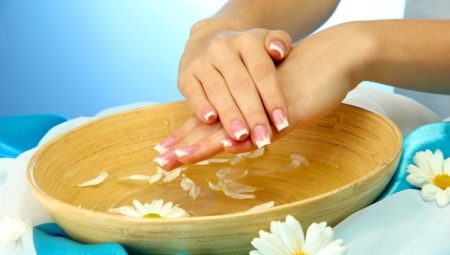
The skin of the hands is exposed to many negative factors every day, and therefore needs regular care. In addition to the skin, joints and bones can be injured and complex rehabilitation is needed to restore them. You don't have to buy expensive products or visit salons in order to keep your hands in good condition. At home, you can make and take hand baths. This article will consider in more detail the properties of the trays and recommendations for their preparation.
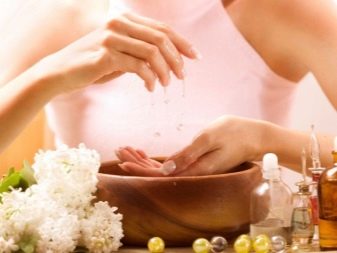

Peculiarities
Full-fledged hand care can be organized at home without resorting to expensive services in salons. From simple and affordable components, you can independently make hand baths at home, which will be no less effective than expensive store products. The composition can be made from a wide variety of components.
First of all, the baths differ from each other in the properties that they provide. The solutions can have a beneficial effect not only on the skin, but also on the joints and bones, as well as improve blood circulation. Before preparing the bath, it is important to consider the purpose for which this procedure will be carried out.
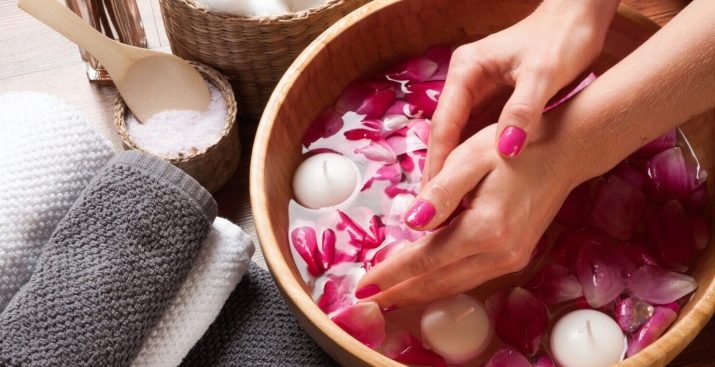
Most often, the problems are associated with the skin of the hands. Even without any negative effects of external factors and injuries, the condition of the skin tends to deteriorate with age. First of all, this is due to age-related changes and aging of the skin. The second common problem is dry skin due to insufficient moisture.
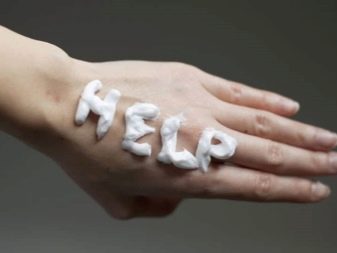
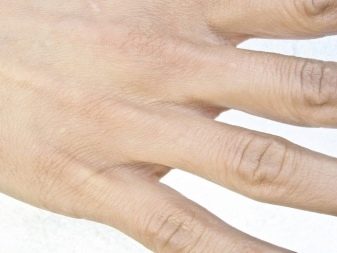
Even if the hands are in good condition, do not neglect the care products. Regular bathing will keep the skin in good condition and avoid many of the problems associated with it.
Deterioration of the skin condition occurs for the following reasons:
- without the use of nutrients, the skin loses a large amount of moisture over time, as a result of which it becomes dry and flaky;
- the skin is negatively affected by atmospheric influences, such as wind, direct sunlight, temperature drops and precipitation;
- with age, the processes of cell regeneration slow down, and the outer layer of the skin becomes thinner;
- some problems in the body associated with a lack of iodine or certain vitamins can affect the condition of the skin;
- chemical and mechanical damage to the skin.

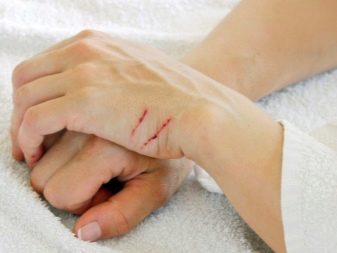
Benefit
A variety of products and procedures are used for hand skin care. Each method has its own advantages.
Consider the advantages of hand baths:
- this procedure helps to restore the skin even in advanced cases when the skin has become very dry;
- have a nourishing and moisturizing effect;
- help in the fight against skin aging and effectively smooth wrinkles;
- reduce hand sweating;

- salt baths can be used for rehabilitation after a fracture, which will reduce pain, relieve swelling and will contribute to the regeneration of damaged bones and tissues;
- strengthen joints and reduce inflammation, therefore they are often used for arthritis;
- promote tissue regeneration, accelerate metabolic processes and cell renewal, therefore they are used to heal small wounds and cracks;
- can be used as a brightening agent as masks help get rid of age spots.

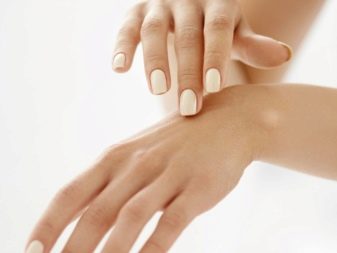
Contraindications
In certain cases, hand baths should not be taken. If you neglect the contraindications for such a procedure, then you can only worsen the condition of the skin or even harm the body as a whole.
Hand baths are not recommended for use in the following cases:
- there are severe damage to the skin in the form of wounds and cracks;
- high blood sugar;
- varicose veins on the hands;
- high blood pressure;
- inflammatory processes of the skin, which are accompanied by purulent discharge.

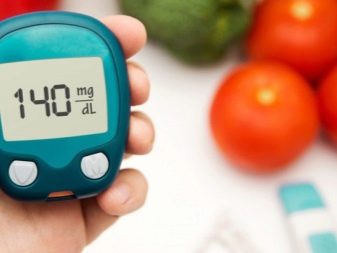
Recipes
There are a huge number of ready-made recipes for hand baths. It is only important to choose the right composition for a particular case.
All baths can be roughly divided into three types:
- contrasting;
- low temperature;
- high temperature.
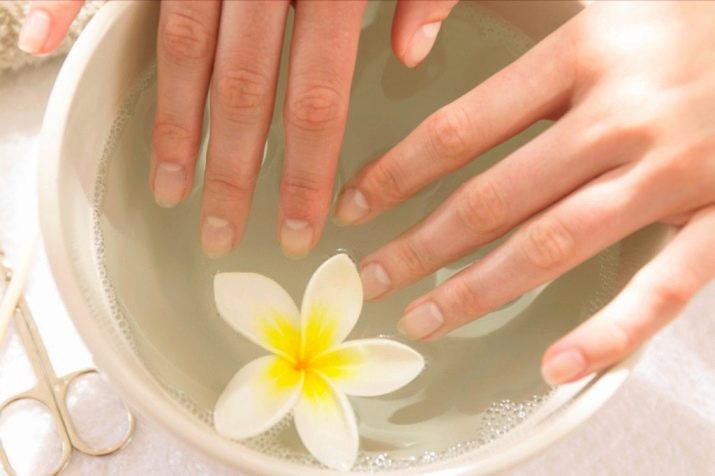
The procedure for taking contrast baths involves the use of both hot and cold composition. In this case, hands will need to be immersed in water of different temperatures. This procedure improves blood circulation and has a beneficial effect not only on the skin of the hands, but also on the condition of the whole organism.
Cold baths have a similar effect to contrast treatments. In this case, the effect is also exerted on the circulatory system. In addition, this procedure has a good tonic effect for the whole body.
It is customary to use hot formulations in order to reduce the inflammatory processes of the skin. Also, such baths help to reduce pain and therefore are often used in rehabilitation after fractures, sprains and dislocations.
When additional components are added to the water, the properties of the bath change significantly. In this case, the main effect on the skin of the hands will be the ingredients used and their properties.
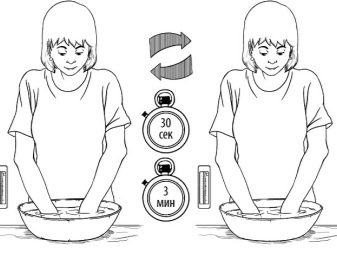

Paraffinic
Paraffin is widely used in cosmetology, as it has some medicinal properties. It is primarily used to moisturize and soften rough skin.Among the moisturizing and softening compositions for the skin, the paraffin bath is one of the most popular.
For cosmetic purposes, it is best to use paraffin wax purchased from a pharmacy. For a single use, it will take about two hundred grams of the substance. It is not recommended to use candles or other paraffin household goods for the procedure, since the quality of the substance in this case will be very doubtful.
To make such a bath, the first step is to bring the paraffin to a liquid state. To melt the paraffin wax, it is best to warm it up in a water bath. It is important to make sure that the melted substance is not too hot. Otherwise, you can get a skin burn.
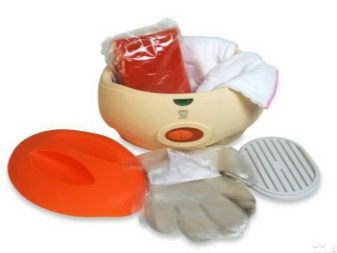
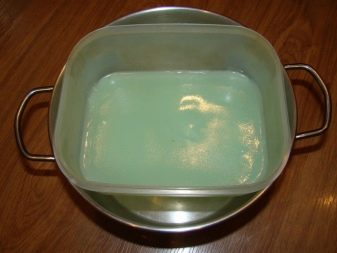
For additional protection of the skin, it is best to lubricate the hands with a moisturizing cream before the procedure. After the paraffin is melted, you need to dip your hands into the viscous mass and hold it for literally five seconds. The steps for lowering and removing the brushes from the molten substance must be repeated about three times.
The paraffin will wrap around your hands and harden a thin layer on them. To improve the effect of using a paraffin bath, it is recommended to wrap brushes covered with a hardened substance with cling film, after which gloves are put on. After thirty minutes, you can free your hands and remove the paraffin layer from them.
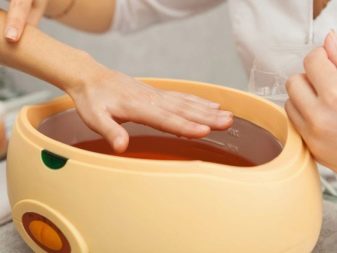

With soda
Used in moderation, baking soda works well on the skin of the hands and is very effective in combating flaking and dryness. There are several ways to prepare soda baths.
The first recipe involves the use of the following components:
- one liter of water at room temperature;
- one small spoonful of baking soda and ammonia;
- a large spoonful of liquid soap or soap shavings.

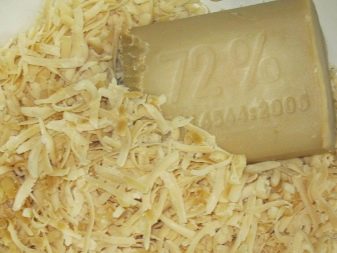
All ingredients are mixed into a homogeneous mass, after which hands must be immersed in it. The time for taking the procedure is twenty minutes, after which hands must be wiped with a dry, clean towel.
The second version of the bath is made from a tablespoon of baking soda, three drops of iodine and one liter of water. In such a bath, hands must be kept for a quarter of an hour.

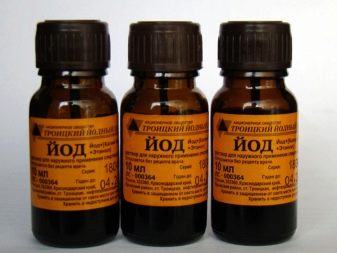
With salt
Salt baths have a beneficial effect on bones and nails. In the first case, the composition is used for the purpose of rehabilitation after a fracture, and in the second, it strengthens the nails. It is recommended to take salt baths as a whole course, which should last ten days.
To prepare a one-time solution, you will need one large spoonful of salt and 350 milliliters of warm water. The components are combined and mixed until the salt is completely dissolved. After that, hands must be immersed in the solution for no more than fifteen minutes.
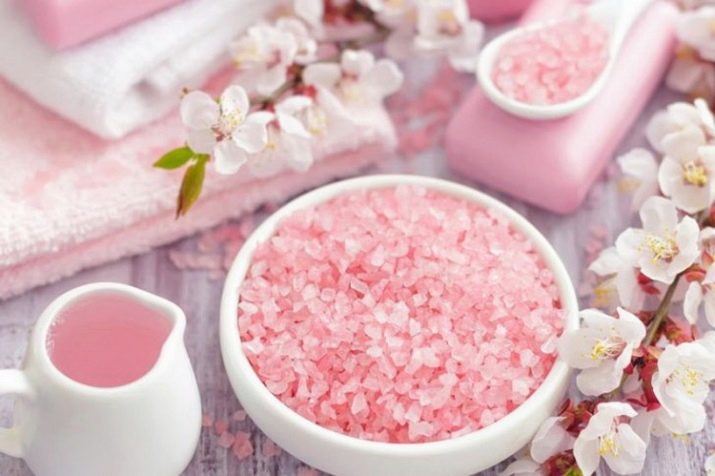
Glycerin
A glycerin bath is another effective formulation in combating dry skin. In addition to moisturizing properties, such a product performs protective functions, reducing the negative effects of direct sunlight, low temperatures and precipitation. To prepare the mask, it is necessary to combine an infusion of chamomile with glycerin (1 teaspoon) and ammonia (ten drops).
First, you need to prepare an infusion of two large spoons of dry chamomile and 500 milliliters of water. First, you need to boil the water, and only then add the medicinal plant to it and stand for 10 minutes, after which the solution must be filtered. All other components are already introduced into the resulting infusion. It is recommended to take a bath with glycerin no more than twenty minutes.
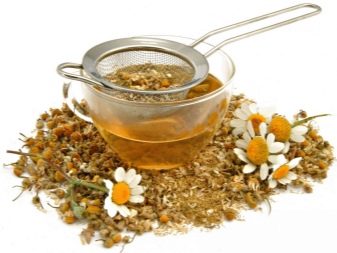
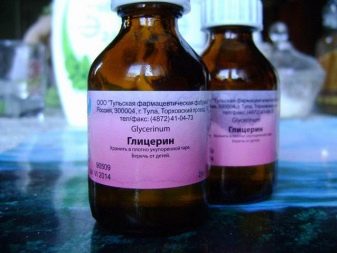
With starch
Starch baths are used to restore the skin. Such mixtures nourish and moisturize the skin well, as well as promote tissue regeneration. The easiest way to make a bath is to stir one tablespoon of starch in a glass of warm water.
Vegetable and essential oils can be added to starch. For hardened skin, in addition to potato starch, it is recommended to pour a tablespoon of olive oil into the water.
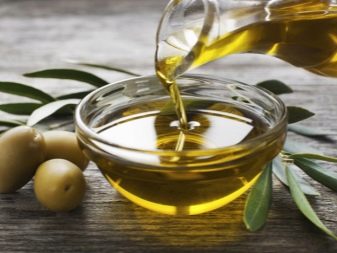

Decoctions
Various decoctions can be used as trays. Infusions of medicinal plants are already a full-fledged composition for taking the procedure. However, if desired, you can add other components to the broth.
Celandine heals burns well, and also helps in the fight against many skin diseases. The concentration of celandine should not be too high. To prepare the infusion, you need one tablespoon of the dried plant and 20 milliliters of hot boiled water. The solution is infused for 20 minutes, after which it must be stirred with 2.5 liters of water and already used as a bath.
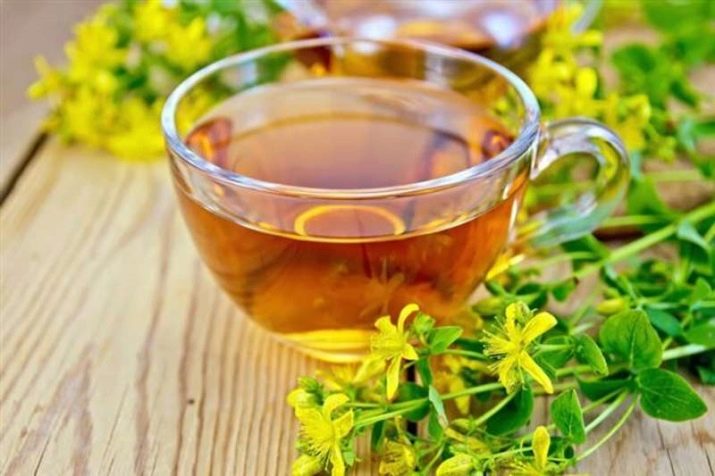
Oak bark infusion is mainly used as a remedy to combat excessive sweating of the palms. For the best effect, the bath is prepared with the addition of dairy products. A tablespoon of oak bark must be boiled in 250 milliliters of milk for half an hour. The resulting broth must be passed through a fine sieve or cheesecloth, and then mixed with half a glass of warm water.
After that, you can take a hand bath. It is recommended to carry out this procedure daily, until positive results appear. The broth can be prepared for several sessions at once, since it can be stored in the refrigerator for a long time without losing its properties.
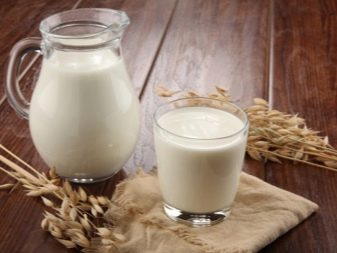
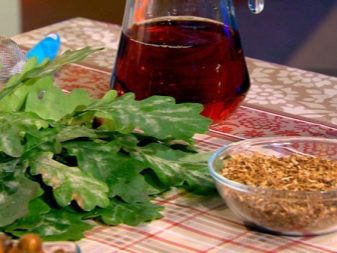
With citric acid
Citric acid formulations help strengthen thin and brittle nails. However, you need to use such baths no more than once a week, otherwise you can only harm the skin and nail plates. To prepare the product, you will need to mix one tablespoon of vegetable oil and a small spoonful of citric acid. The resulting composition must be slightly heated in a water bath until a homogeneous mass is obtained, in which you need to immerse your fingers for fifteen minutes.
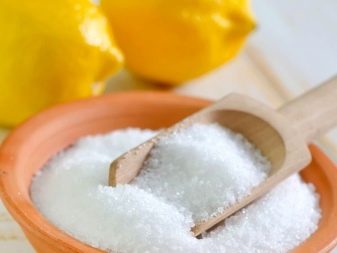

With essential oils
Essential oils can be added to trays where another ingredient is used as a base, or the extract can be added to water as a base element. The purpose of the composition made will depend on the properties of the aromatic liquid. Pine oils help relieve joint pain and fatigue. To prepare such a remedy, you will need to dilute half a teaspoon of the fragrant liquid in two liters of warm water.
To whiten the nails and make their shade more even, use trays with the addition of lemon and rosemary extract. For 250 milliliters of warm water, take three drops of each fragrant liquid. Such a bath should be taken no more than twenty minutes. Parsley extract also has a whitening effect.
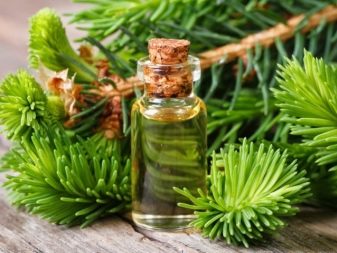
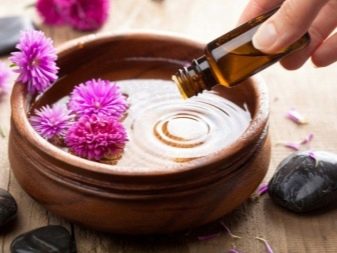
Advice
There are many options for preparing hand baths. The components for such a solution must be selected taking into account the propensity for allergic reactions to certain products, age, as well as the condition of the skin. Under the age of 30, it is best to include ingredients such as oatmeal, natural juices from vegetables and fruits, and fermented milk drinks.
After forty, it is recommended to do hand baths with honey, aloe juice, essential oils and cream. Medicinal plants in the baths will be useful for any age, without exception.
A properly selected herbal tea will help rejuvenate, moisturize and restore the skin.

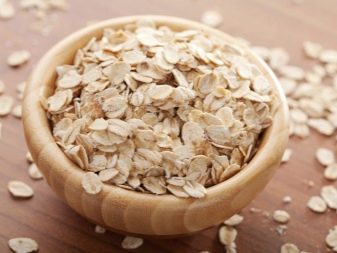
Before taking a hand bath, it is recommended to cleanse the skin of impurities. To do this, you can wash your hands with regular soap. In order for the components in the bath to more easily penetrate the skin, it is recommended to remove dead particles from the surface of the skin with a scrub before the procedure.
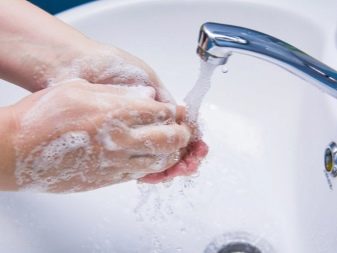

For information on how to make baths to soften the skin of your hands at home, see the next video.








